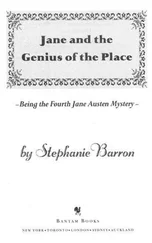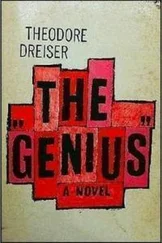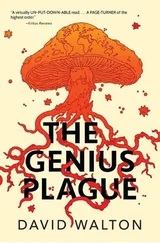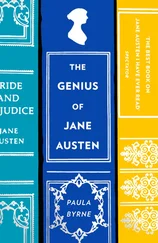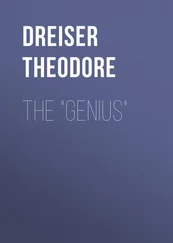Unknown - The Genius
Здесь есть возможность читать онлайн «Unknown - The Genius» весь текст электронной книги совершенно бесплатно (целиком полную версию без сокращений). В некоторых случаях можно слушать аудио, скачать через торрент в формате fb2 и присутствует краткое содержание. Жанр: Старинная литература, на английском языке. Описание произведения, (предисловие) а так же отзывы посетителей доступны на портале библиотеки ЛибКат.
- Название:The Genius
- Автор:
- Жанр:
- Год:неизвестен
- ISBN:нет данных
- Рейтинг книги:4 / 5. Голосов: 1
-
Избранное:Добавить в избранное
- Отзывы:
-
Ваша оценка:
- 80
- 1
- 2
- 3
- 4
- 5
The Genius: краткое содержание, описание и аннотация
Предлагаем к чтению аннотацию, описание, краткое содержание или предисловие (зависит от того, что написал сам автор книги «The Genius»). Если вы не нашли необходимую информацию о книге — напишите в комментариях, мы постараемся отыскать её.
The Genius — читать онлайн бесплатно полную книгу (весь текст) целиком
Ниже представлен текст книги, разбитый по страницам. Система сохранения места последней прочитанной страницы, позволяет с удобством читать онлайн бесплатно книгу «The Genius», без необходимости каждый раз заново искать на чём Вы остановились. Поставьте закладку, и сможете в любой момент перейти на страницу, на которой закончили чтение.
Интервал:
Закладка:
WEDNESDAY MAY 2 1973 breakfast scrambled eggs lunch apple ham & cheese
dinner apple ham & cheese
His meals never varied, with the exception of Christmas, when he ate roast beef, and one week in January 1967, when he ate oatmeal for breakfastan experiment that must have failed, because by the following week he was back to scrambled eggs, a habit dutifully recorded for the next thirty-six years.
The weather journal, while it varied every day (containing information on temperature, humidity, and general conditions), conveyed much the same effect.
They made for dreadful bathroom reading. But I saw a kinship between the journals and the drawings, the same obsessiveness and strict adherence to routine. You could even call it love; for what is love, if not the willingness to repeat oneself ?
Whereas the church journal made the idea of a benevolent, present God seem absurd. If you prayed every day, three times a day or sometimes more, wrote down all your rosaries and Hail Marys and trips to the confessional, and yet nothing changedyour meals remained the same, the weather kept on being gray or slushy or muggy, just like it always had beenhow could you continue to believe? “Mass” began to sound like just that and no more: a bulk of useless activity that added up to nothing.
Lest you think I was reading too much into the work, let me tell you that I was not alone in finding something awe-inspiring about the journals. They were Ruby’s favorite part of the installation, much preferred to the drawings, which she found somewhat overbearing. At her behest I decided to display the journals in their own corner, without explanatory text. We would let people decide for themselves.
We put the opening on the books for July 29. Usually I run shows for four to six weeks. I slotted Victor Cracke in for eight, with a mind to let him run longer if I so chose. We hadn’t even touched the bulk of the work, but I simply could not wait to get the pieces up. I called Kristjana and told her that her Arctic ice pack installation would have to wait. She swore at me, threatened me, told me I’d hear from her lawyer.
I didn’t care. I was lovesick.
For those six months I barely went out. Marilyn would come by the storage locker after work, bring me a panino and a bottle of water. She’d tell me I looked like a homeless person. I’d ignore her and eventually she’d shrug and leave.
While Ruby and I labored to compile the catalogue raisonne, Nat handled the front end of the gallery. He consulted me on important decisions, but otherwise he had total control. He could have stolen anything he wanted, sold pieces for half off, and I would not have noticed. The lone apostle has a full-time job.
AND THE PROPHET HIMSELF?
To tell you the truthand here begins my confessionI stopped looking for him. Before very long I thought that I might be better off never meeting the man.
I conducted the interviews excerpted at the beginning of this chapter, as well as a handful of others with people who claimed to have noticed Victor roaming the halls of Muller Courts. All their stories turned out to be fragmentary, anecdotal, and self-contradictory. One of the security guards told me that Victor had been a drug dealer. Others suggested janitor, cook, writer, and bodyguard.
A physical description proved slippery as well. He was tall; he was short; he was average. He was gaunt; he had a big belly; a scar on his face, a scar on his neck, no scars at all. A moustache. A beard. A moustache and a beard.
That everyone remembered him differently made sense; he had never been in one person’s presence long enough to leave a distinct impression.
He tended to stare at the ground rather than look you in the eye. On that people agreed.
With Tony’s help I learned that Cracke had been a tenant since 1966, and that his apartment was heavily rent-controlled, the monthlies low even for the slummiest part of Queens. Until the time of his disappearance, in September 2003, he had never missed a payment.
There were no other Crackes in the phone book.
Father Lucian Buccarelli, of Our Lady of Hope, had never heard of Victor. He recommended that I talk to his colleague, Father Simcock, who had been around the parish a lot longer.
Father Allan Simcock didn’t know any Victor Cracke. He wondered if I had the right church. I told him I could be wrong. He made a list of all the neighborhood churchesa list far longer than I expectedand, wherever possible, gave me the names of people to talk to.
I did not follow up on them.
I am not a detective. And I owed Victor nothing. He could have been dead; he could have been alive. It didn’t matter to me. All that mattered to me was his art, and that I had, in spades.
PEOPLE DON’T APPRECIATE the creativity of dealing art. In the contemporary market, it is the dealernot the artistwho does most of the work. Without us there would be no Modernism, no Minimalism, no movements at all. All the contemporary legends would be painting houses or teaching adult education classes. Museum collections would grind to a halt after the Renaissance; sculptors would still be carving pagan gods; video would be the province of pornography; graffiti a petty crime rather than the premise behind a multimillion-dollar industry. Art, in short, would cease to thrive. And this is becausein a post-Church, post-patronage eradealers refine and pipeline the fuel that drives art’s engine, that has always driven it and always will: money.
These days especially, there is simply too much material out there for any normal person to be able to distinguish between good and bad. That’s the dealer’s job. We are creators, tooonly we create markets, and our medium is the artists themselves. Markets, in turn, create movements, and movements create tastes, culture, the canon of acceptabilityin short, what we think of as Art itself. A piece of art becomes a piece of artand an artist becomes an artistwhen I make you take out your checkbook.
Victor Cracke, then, was my definition of a perfect artist: he created and then he disappeared. I couldn’t have imagined a greater gift. My very own tabula rasa.
SOME OF YOU MIGHT DEEM my actions ethically squishy. Before you judge me, consider this: plenty of times art has been dragged into public without its creator’s knowledgeeven against his will. Great art demands an audience, and to deny that is itself unethical. If you’ve ever read a poem by Emily Dickinson, you will agree.
Moreover, it’s not as though I lacked precedent. Consider, for example, the case of the so-called Wireman, the name given to the creator of a series of sculptures discovered in a Philadelphia alley on a trash night in 1982. I’ve seen them; they’re eerie: thousands of found objectsclock faces, dolls, food containerscocooned in loops of heavy-gauge wire. Nobody knows who the artist was; nobody knows what motivated him to produce. We don’t know for certain that he was, in fact, a he. And while the question of whether the pieces were intended as art is open to debate, that they were pulled out of the garbage would seem to indicate quite clearly that they weren’t intended for public consumption. This misgiving, however, has not stopped galleries from selling the pieces at commanding prices; it has not stopped museums across the United States and Europe from mounting exhibitions or critics from commenting on the work’s “shamanistic” or “totemic” properties, speculating about its similarities to African “medicine bundles.” That’s a lot of talk and cash and activity generated by what might have ended up as landfill, were it not for a sharp-eyed passerby.
The point is that in creating his objects, the Philadelphia Wireman did only some of the work, and I would argue not the majority of it. He made things. It took dealers to make those things into art. Once anointed as such, there’s no going back. You can destroy, but you can’t uncreate. If the Wireman showed up tomorrow and began shrieking about his rights, I doubt anyone would listen to him.
Читать дальшеИнтервал:
Закладка:
Похожие книги на «The Genius»
Представляем Вашему вниманию похожие книги на «The Genius» списком для выбора. Мы отобрали схожую по названию и смыслу литературу в надежде предоставить читателям больше вариантов отыскать новые, интересные, ещё непрочитанные произведения.
Обсуждение, отзывы о книге «The Genius» и просто собственные мнения читателей. Оставьте ваши комментарии, напишите, что Вы думаете о произведении, его смысле или главных героях. Укажите что конкретно понравилось, а что нет, и почему Вы так считаете.

